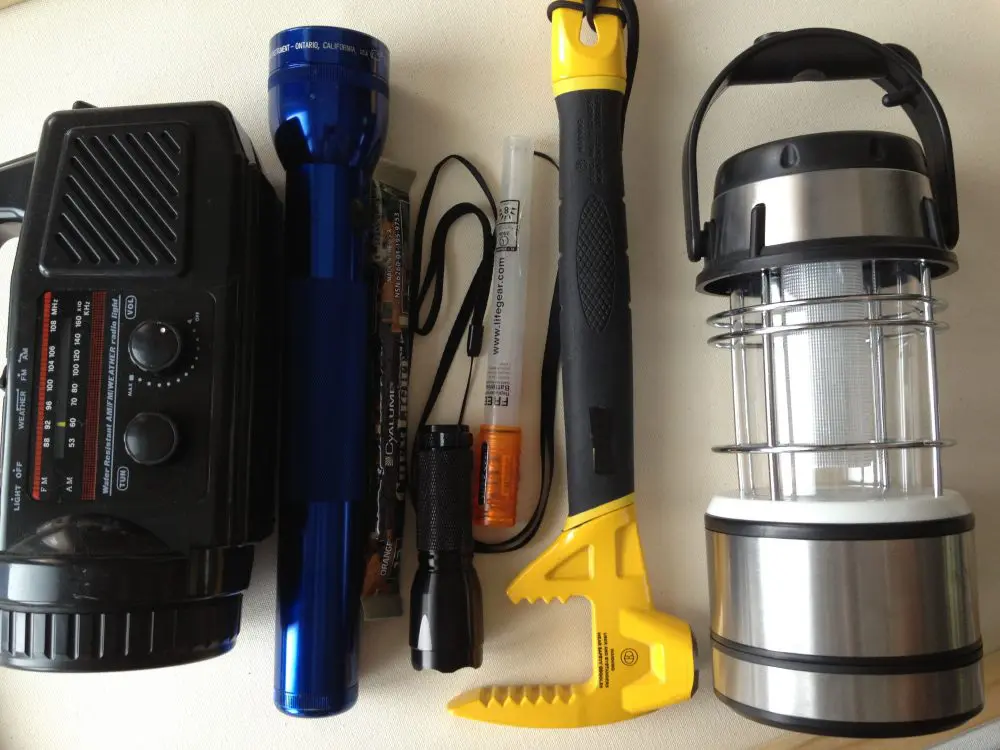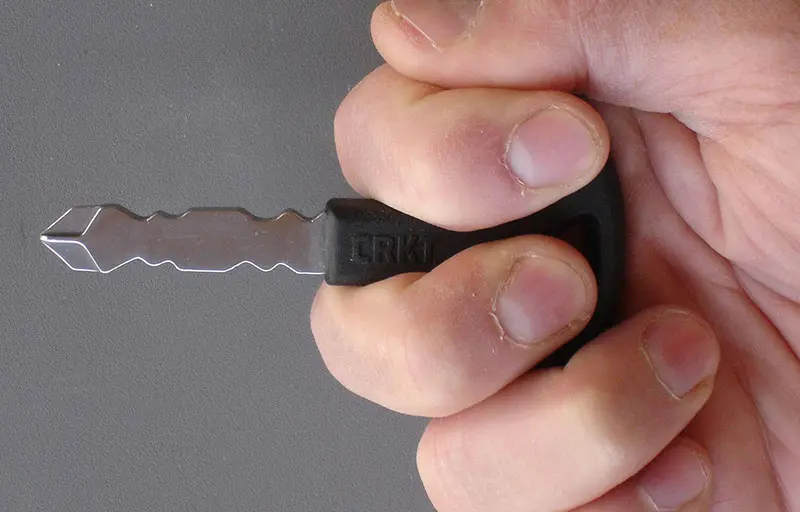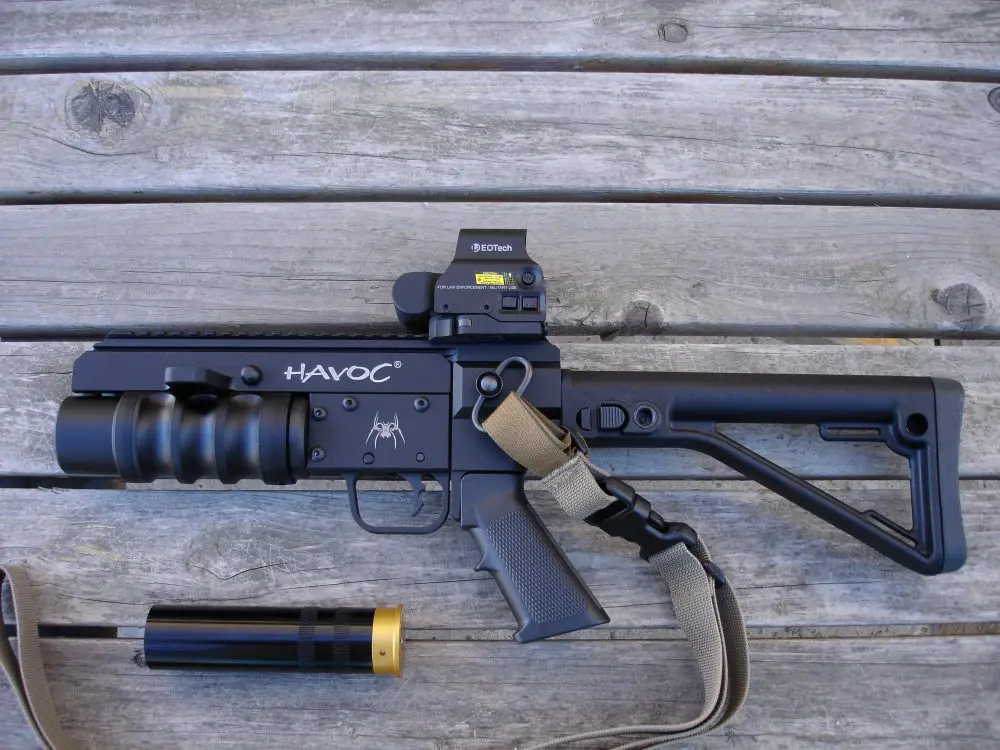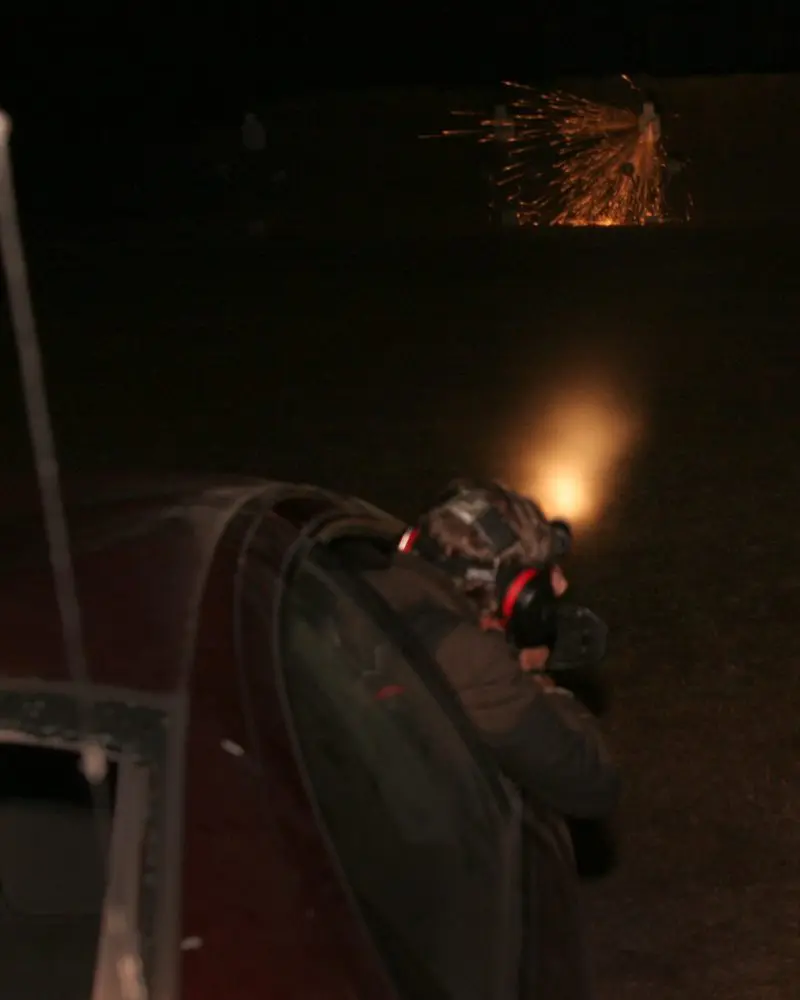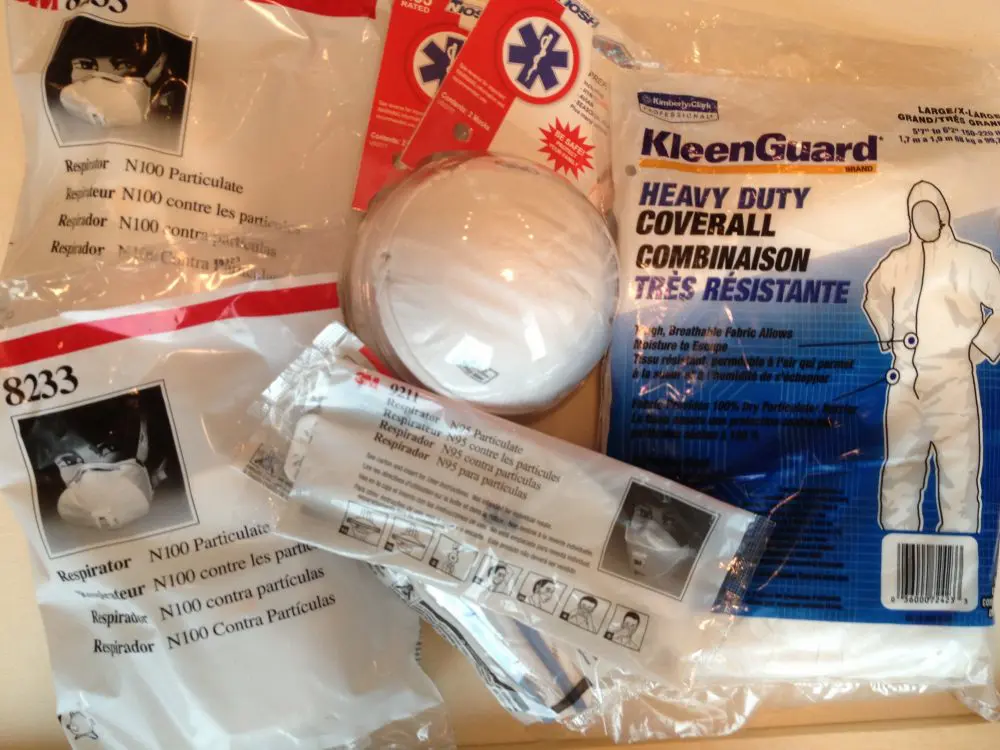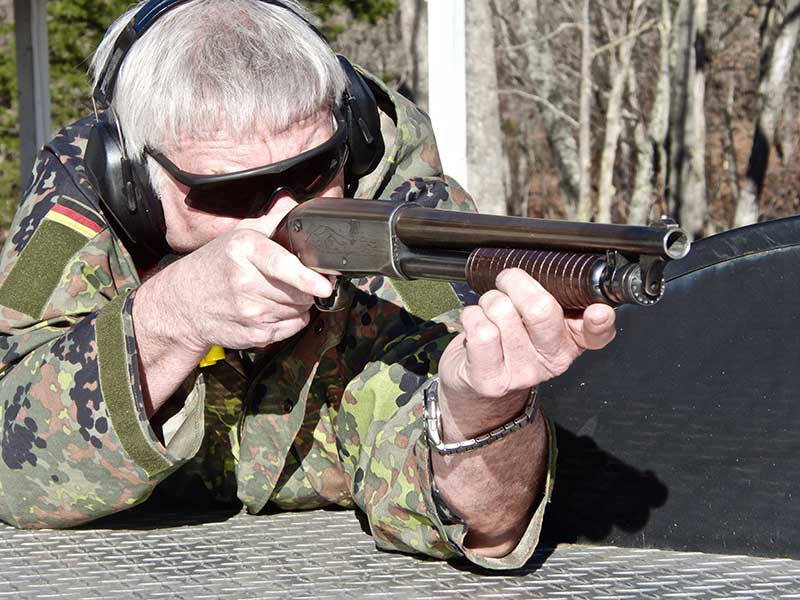
I’ve written before about the advantages of a 20-gauge combat shotgun, and decided it was time to revisit the issue in this column. Up front, I’ll admit that the #3 Buckshot load normally used in the 20-gauge shotgun is not as devastating as the 00 Buckshot load standard in most 12-gauge fighting shotguns. However, that is a relative statement. A typical 2¾-inch 20-gauge Buckshot load contains 20 #3 Buckshot pellets at 1,200 feet-per-second (fps). The range is less than with 12-gauge 00 Buckshot, but for home or vehicle defense, that’s fairly potent.
And for those not satisfied with that level of performance, three-inch 20-gauge loads are available from Federal and others offering 18 #2 Buckshot pellets at 1,100 fps.
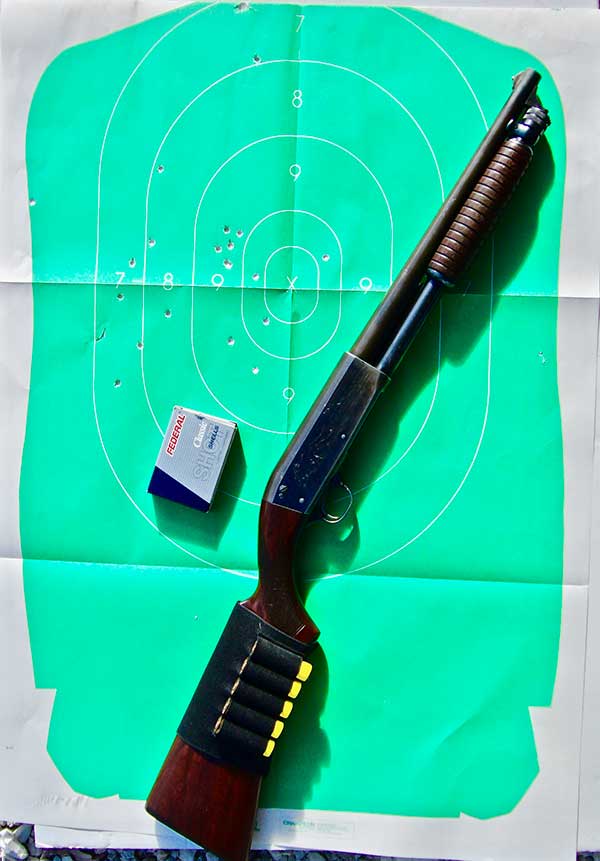
Especially for urban or suburban usage, the lesser range of the 20-gauge loads has always made them somewhat appealing to city plainclothes officers. A lot of urban departments have loaded their 12-gauge shotguns with loads carrying #4 Buckshot.
Having established that effective Buckshot loads are available for the 20-gauge, I’ll discuss some other advantages of combat shotguns chambered for this load. First, I would note that 20-gauge SBS (Short-Barreled Shotguns) with 14-inch or shorter barrels are much easier to control than their big 12-gauge brothers.
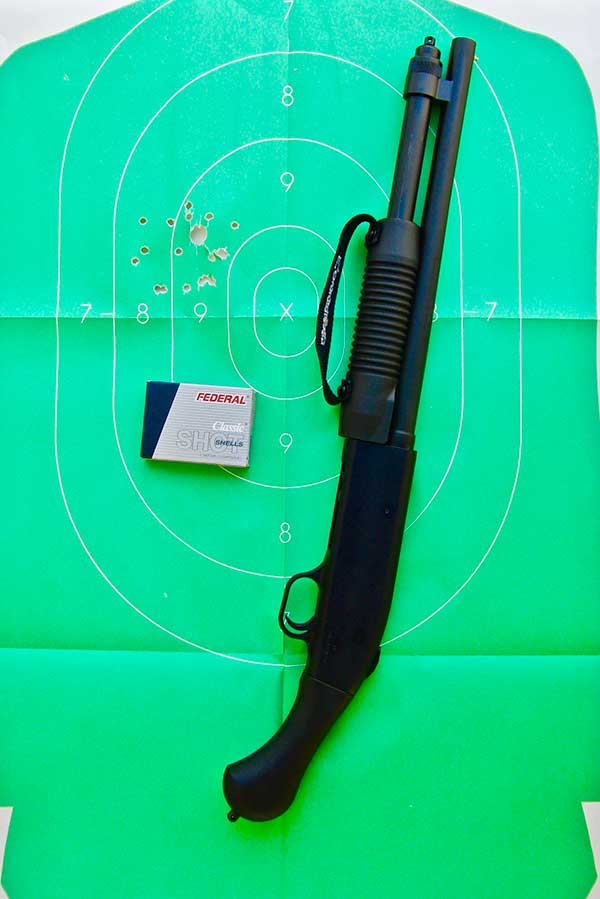
This applies especially to those with pistol grips or to “firearms” such as the Mossberg Shockwave.
A few years ago, a friend and I did a test where we fired a round of 2¾-inch 12-gauge 00 Buckshot into each of three targets from a 14-inch SBS at seven yards and then did the same drill with a 20-gauge 14-inch SBS. I honestly don’t remember that exact time differential now, but the three hits definitely came faster with the 20-gauge.
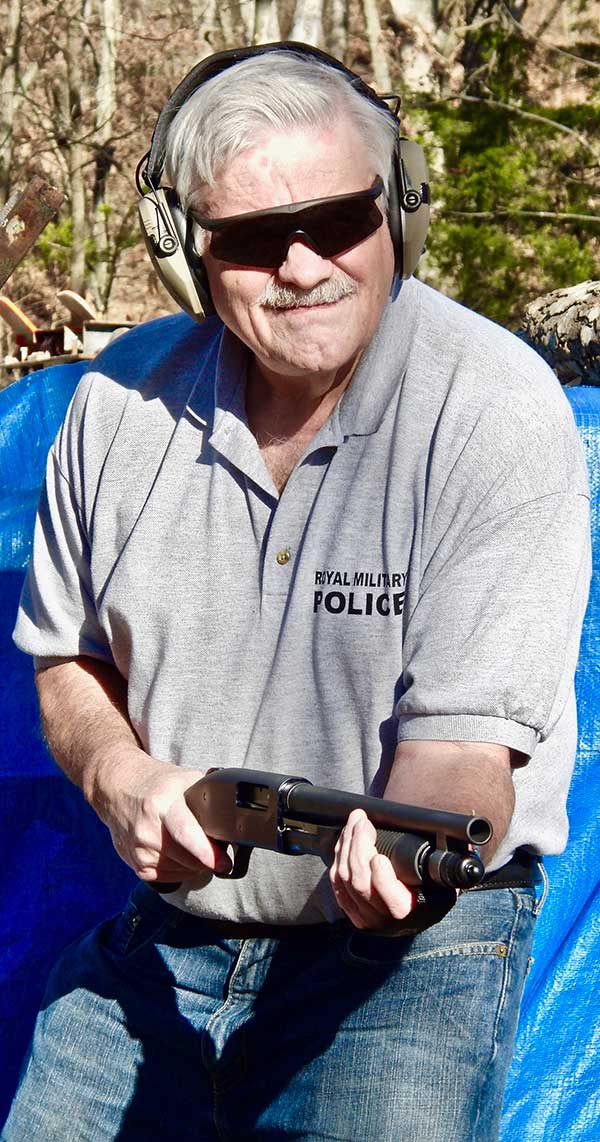
Admittedly, the 20-gauge was a registered Ithaca 37 that was old enough that it still could be “slam fired” by just holding back the trigger and operating the slide. I have fired an older 12-gauge Ithaca that retained this feature as well, and the 20-gauge was definitely faster. There is less muzzle flip and less recoil with the 20-gauge combat shotgun, allowing faster target reacquisition.
The weight difference between a 20-gauge fighting shotgun and a 12-gauge will generally make the smaller gauged weapon quicker to handle. For example, the 12-gauge Mossberg Shockwave weighs 5.25 pounds, while the 20-gauge version weighs 4.9 pounds.
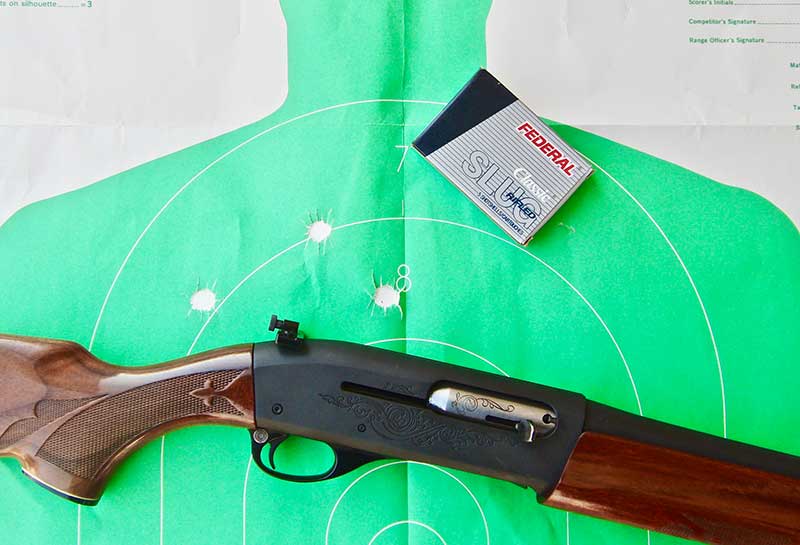
On the Remington 870 Tactical, the difference is more obvious: 7.5 pounds for the 12-gauge 870 Express Tactical with 18.5-inch barrel, while the 870 Express in 20-gauge with the same length barrel weighs only six pounds.
These same features that make the 20-gauge combat shotgun faster in a fight also normally make it more user friendly for those of smaller stature. I think many readers are aware that one reason there are fewer 12-gauge shotguns in patrol cars these days is that a lot of female officers have trouble qualifying with them.
However, that generalization is not always true. The first female FBI agent I remember in the St. Louis Office cleaned my clock and the clocks of many others in a contest with riot guns on moving targets at the Chapman Academy one weekend. She had grown up on a farm and had hunted with a shotgun from not long after she could walk.
Nevertheless, the 20-gauge combat shotgun is easier for many shooters, to the extent that they feel confident enough to use it, whereas they would not use a 12-gauge. I have also known a couple of experienced shooters who chose a 20-gauge combat shotgun over a 12-gauge because of injuries that made recoil an issue for them.
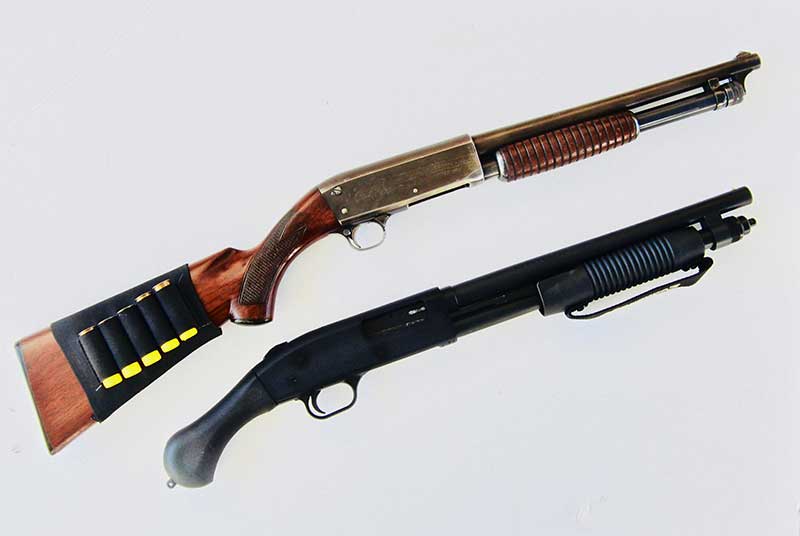
I’ve tried various 20-gauge fighting shotguns over the last 25 years or so. Originally, I thought the Russian Saiga 20-gauge offered some real possibilities, as it took a detachable box magazine. I had a custom shotgun smith work mine over and install a choke that allowed very tight patterns. I also got some extended magazines for it. The problem was that the magazine was so long that it interfered with using slide-action.
When my friend got his SBS Ithaca, he sold me a Remington 1100 he had custom built for combat. It’s a really sweet little combat shotgun. I have used a Remington 11-87 fighting shotgun as my home-defense shotgun for years, so the 1100 20-gauge fits me well. It allows very quick follow-up shots due to lighter recoil and the self-loading action and also patterns well.
I also have a 20-gauge Stevens double barrel with 20-inch barrels. It’s very handy, but I don’t like to keep it around the house with loaded chambers, so haven’t really used it in years.
My friend’s 20-gauge Ithaca 37 is a nice close-combat weapon. Its 14-inch barrel and lack of a trigger disconnect make it handy and fast. Another plus is that it ejects downward, allowing it to be readily used off of either shoulder to make good use of cover.
Recently, I received an especially useful 20-gauge for combat use. I wrote this column a few issues ago on using the Mossberg Shockwave firearm from a vehicle (Tactical Use of Mossberg 590 Shockwave, S.W.A.T. November 2017). That one was a 12-gauge and I found it performed well within the confines of a vehicle. I now have the 20-gauge version of the Shockwave, which performs just as well but has less recoil, so I can stay on target better for follow-up shots. Since it is a little lighter, it is also a bit livelier in handling.
Remington offers some of its 870 combat shotguns, including the TAC-14, in 20-gauge as well, so those who like the 870 can find one to their liking. I’m a huge fan of the Remington 870 and own two Scattergun Technologies ones, as well as another three stock versions.
But I have to give the Shockwave a slight edge for use in close quarters. I prefer its top-mounted safety and extra round in the magazine.
I still rate the 20-gauge combat shotgun highly, especially in SBS or “firearm” versions, where recoil and muzzle flip would be especially noticeable in a 12-gauge weapon.
The availability of the TAC-14 and Shockwave in 20-gauge makes these innovative combat smoothbore fighters even more effective.
SOURCES
ITHACA GUN COMPANY
(419) 294-4113
www.ithacagun.com
O.F. MOSSBERG & SONS, INC.
(203) 230-5300
www.mossberg.com
REMINGTON ARMS COMPANY, INC.
(800) 243-9700
www.remington.com

